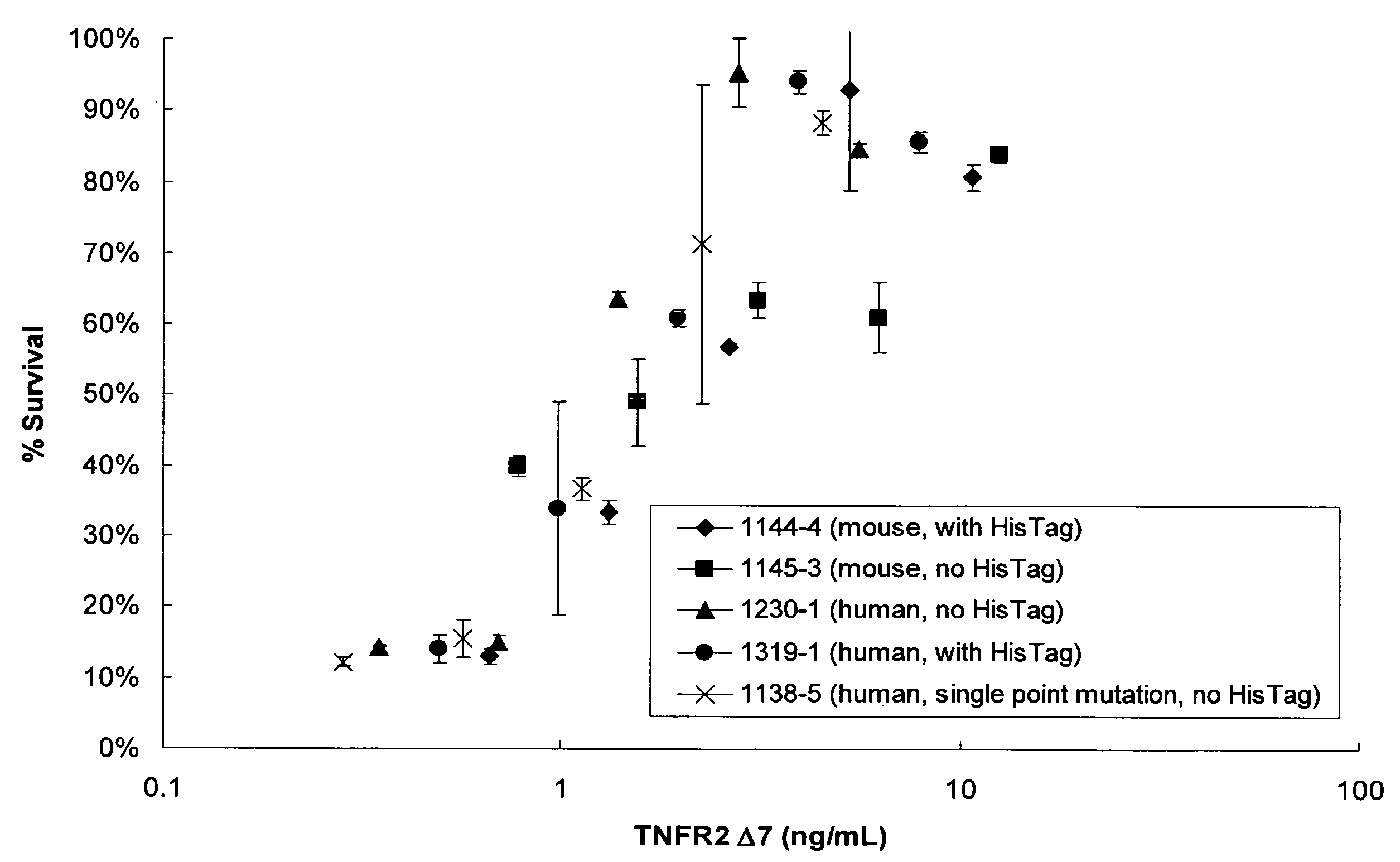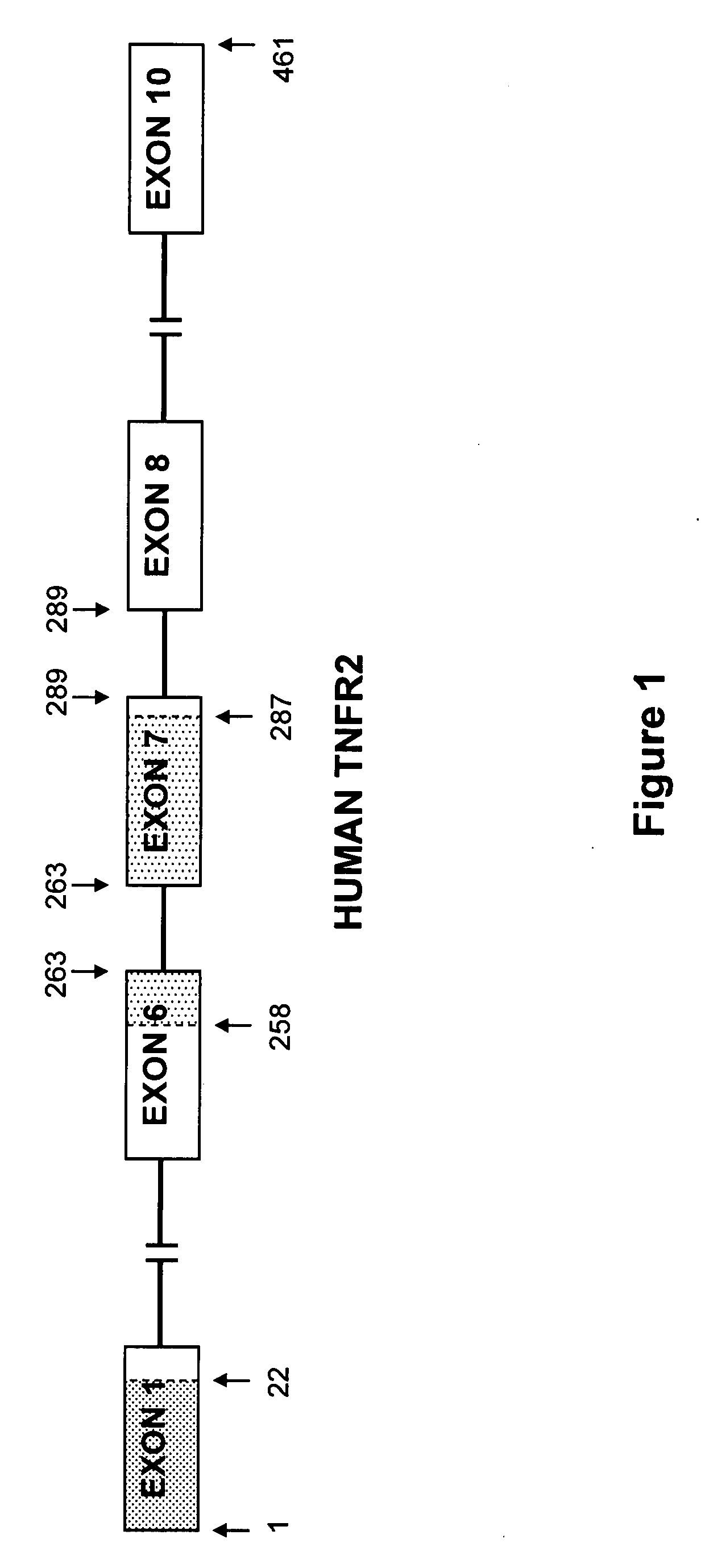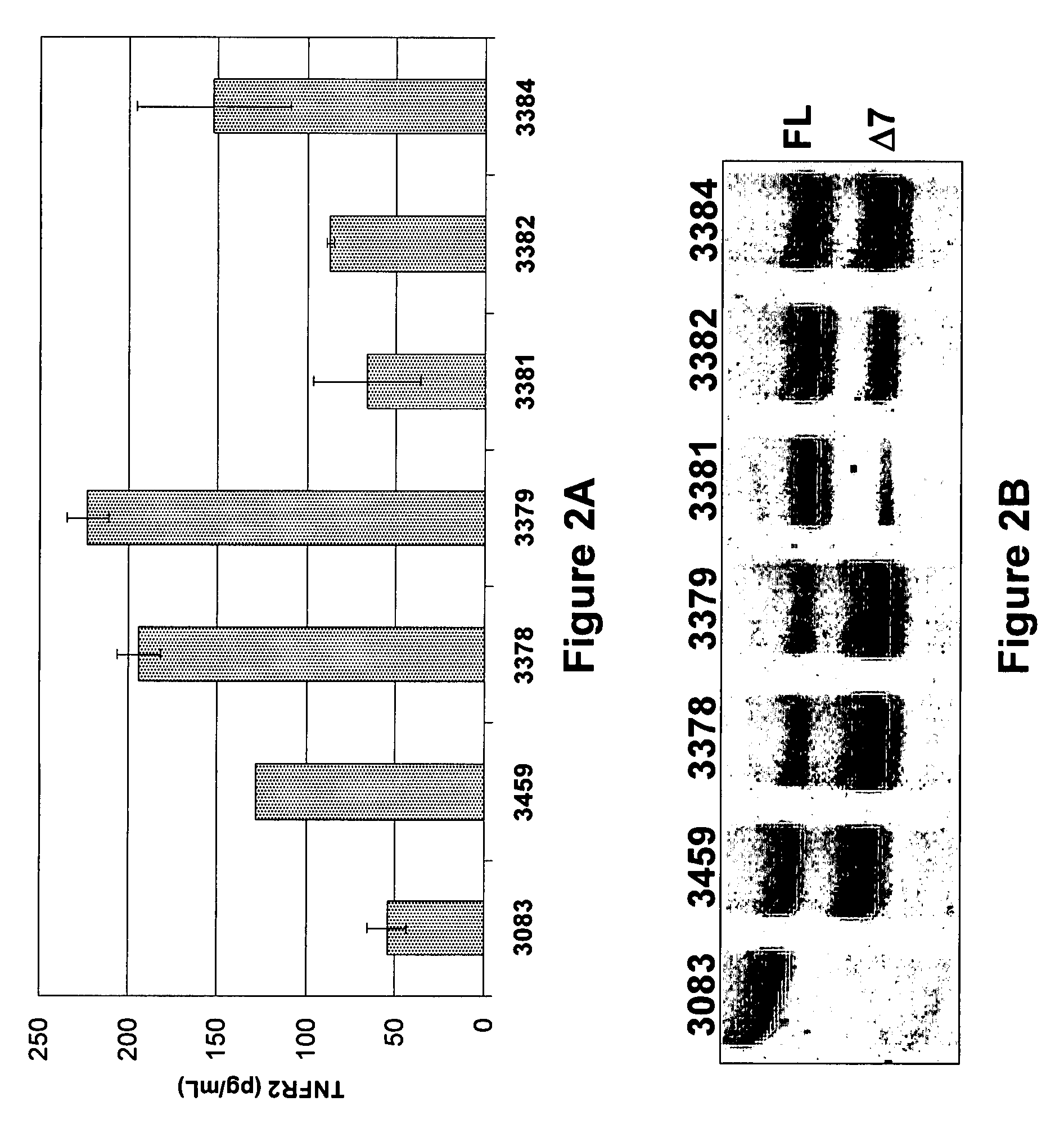Soluble TNF receptors and their use in treatment of disease
- Summary
- Abstract
- Description
- Claims
- Application Information
AI Technical Summary
Benefits of technology
Problems solved by technology
Method used
Image
Examples
example 1
Materials and Methods
[0155] Oligonucleotides. Table 3 lists chimeric locked nucleic acid (LNA) SSOs with alternating 2′deoxy- and 2′O-4′-(methylene)-bicyclic-ribonucleoside phosphorothioates and having sequences as described in U.S. application Ser. No. 11 / 595,485. These were synthesized by Santaris Pharma, Denmark. For each SSO, the 5′-terminal nucleoside was a 2′O-4′-methylene-ribonucleoside and the 3′-terminal nucleoside was a 2′deoxy-ribonucleoside. Table 4 shows the sequences of chimeric LNA SSOs with alternating 2′-O-methyl-ribonucleoside-phosphorothioates (2′-OMe) and 2′O-4′-(methylene)-bicyclic-ribonucleoside phosphorothioates. These were synthesized by Santaris Pharma, Denmark. The LNA is shown in capital letters and the 2′-OME is shown in lower case letters.
[0156] Cell culture and transfections. L929 cells were maintained in minimal essential media supplemented with 10% fetal bovine serum and antibiotic (37° C., 5% CO2). For transfection, L929 cells were seeded in 24-wel...
example 2
SSO Splice Switching Activity with TNFR mRNA
[0166] Table 3 shows the splice switching activities of SSOs having sequences as described in U.S. application Ser. No. 11 / 595,485 and targeted to mouse and human TNFRs. Of SSOs targeted to mouse TNFR2 exon 7, at least 8 generated some muTNFR2 Δ7 mRNA. In particular, SSO 3312, 3274 and 3305 induced at least 50% skipping of exon 7; SSO 3305 treatment resulted in almost complete skipping. Of SSOs transfected into primary human hepatocytes, and targeted to human TNFR2 exon 7, at least 7 SSOs generated some huTNFR2 Δ7 mRNA. In particular, SSOs 3378, 3379, 3384 and 3459 induced at least 75% skipping of exon 7 (FIG. 2B), and significant induction of huTNFR2 Δ7 into the extracellular media (FIG. 2A).
TABLE 3SSO Splice Switching ActivitySEQ ID.NameActivityMouse TNFR23272−3304−3305+3306+3307+3308+3309+3310−3311+623274+3312+3273−Mouse TNFR13333+Human TNFR2143378+303379+3380−703381+713382+3383−463384+723459+3460−733461+Control3083−
[0167] Table 4 co...
example 3
Analysis of the Splice Junction of SSO-Induced TNFR2 Splice Variants
[0172] To confirm that the SSO splice switching, both in mice and in human cells, leads to the expected TNFR2 Δ7 mRNA, SSO-induced TNFR2 Δ7 mRNA was analyzed by RT-PCR and was sequenced.
[0173] Mice. Mice were injected with SSO 3274 intraperitoneal (i.p.) at 25 mg / kg / day for 10 days. The mice were then sacrificed and total RNA from the liver was analyzed by RT-PCR using the forward primer TR045 (SEQ ID No: 112) and the reverse primer TR046 (SEQ ID No: 113). The products were analyzed on a 1.5% agarose gel (FIG. 6A) and the product for the TNFR2 Δ7 was isolated using standard molecular biology techniques. The isolated TNFR2 Δ7 product was amplified by PCR using the same primers and then sequenced (FIG. 6B). The sequence data contained the sequence CTCTCTTCCAATTGAGAAGCCCTCCTGC (nucleotides 777-804 of SEQ ID No: 11), which confirms that the SSO-induced TNFR2 Δ7 mRNA lacks exon 7 and that exon 6 is joined directly to e...
PUM
| Property | Measurement | Unit |
|---|---|---|
| Time | aaaaa | aaaaa |
| Composition | aaaaa | aaaaa |
Abstract
Description
Claims
Application Information
 Login to View More
Login to View More - R&D
- Intellectual Property
- Life Sciences
- Materials
- Tech Scout
- Unparalleled Data Quality
- Higher Quality Content
- 60% Fewer Hallucinations
Browse by: Latest US Patents, China's latest patents, Technical Efficacy Thesaurus, Application Domain, Technology Topic, Popular Technical Reports.
© 2025 PatSnap. All rights reserved.Legal|Privacy policy|Modern Slavery Act Transparency Statement|Sitemap|About US| Contact US: help@patsnap.com



